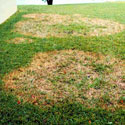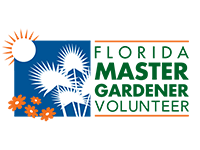The Neighborhood Gardener –
Identifying Turfgrass Diseases
Diseases can be difficult to identify because they often look like other turfgrass problems such as drought, cold damage, insects, or even dog urine damage.
Turfgrass diseases sometimes occur in poorly maintained lawns. Lawns that are properly watered, mowed, and fertilized are less likely to become infected. You should first rule out other factors before concluding your lawn has a disease. Refer to the UF/IFAS Lawn and Garden Problems page to rule out other problematic sources.
If you are still unable to identify your turf problem, disease may be the case. Common Florida turfgrass diseases include large patch, take-all root rot, dollar spot, pythium blight, and others.
Disease symptoms can vary, so it is important to keep a record of past disease occurrences since outbreaks often re-occur in the same location. Common symptoms include an irregularly-colored, circular patch of turfgrass or leafspots. Consult your county’s University of Florida Extension office for diagnosis and solutions.
Pathogens are microorganisms that cause turfgrass diseases. For pathogens to establish, the right environmental conditions must be present. Often, easy changes such as reducing water, providing more sunlight and avoiding excessive feedings can discourage the disease.
Fungicides are often used to treat turfgrass diseases. It is important to know what type of disease is infecting your lawn to determine what type of fungicide to use. Complete recovery can be a slow process; after the disease has been controlled, you can wait for the healthy grass to grow back in, or speed the process by filling in with fresh plugs or sod.





